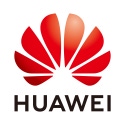Digitization Is Driving the Need for IPv6
As digital transformation continues, the need to expand the IP address pool is critical.
March 9, 2022

As digital transformation continues, the need to expand the IP address pool is critical. This was the primary message from speakers at an IPv6 conference during the first day of Mobile World Congress 2022 in Barcelona.
The “IPv6: Release Connectivity Potential, Boost Digital Economy” conference, sponsored by Informa Tech, focused on how IPv6 enables innovation to support expansion of the digital economy and promote social values such as sustainability and scientific and medical advances.
IPv6 eventually will replace the predominant internet layer protocol, IPv4. It exponentially expands the IP address pool while removing IPv4’s limitations. The existing protocol doesn’t have room to expand to accommodate demand for address space and functionality created by Internet of Things (IoT) deployments, 5G communications, digital applications and multi-cloud expansion. Still, IPv6 adoption has been slow.
“We have not adopted IPv6 as broadly as I would have liked,” said Vint Cerf, father of the internet and currently Google’s chief internet evangelist. “The proliferation of IoT, plus mobiles, simply expands beyond the IPv4 address space. So my view, which I hope many of you share, is we should be intensely pushing for IPv6 capability.”
IPv6 penetration so far has reached 30%, so there’s a long way to go. Continued adoption of IPv6, Cerf said, will have to take place in conjunction with the use if IPv4. “This dual-stack capability seems like it’s the practical way forward. It’s the only way to get additional address space.”
The ultimate goal, however, is to move to an IPv6-only status across the world, said IPv6 Forum Founder and President Latif Ladid. IPv6 adoption will significantly reduce OPEX costs because existing networks are difficult to manage, he added.
Currently, 1.9 billion IPv6 addresses are in use, mostly in Asia, Ladid said. China leads with 435 million, and India is next with 350 million. “Asia is the big show for all kinds of new technologies,” he said.
IPv6 will increase network functionality and address space, enabling every user and device to have a unique IP address. This will have a profound impact on IoT deployments; it means IoT devices will finally be able to “talk to each other,” he said. “This is currently not the case because they don’t have their own IP addresses. It’s taking time until we have the two-way Internet of Things. This is where we’ll have really a breakthrough in technology.”
Digitization and IPv6
More than 100 countries are working on digitization strategies. The European Union’s "Digital Compass" strategy aims to support the digital transformation of enterprises and the construction of a sustainable digital infrastructure.
China has set various goals for its "Digital China" strategy, including accelerating the construction of a digital society, improving digital public services, and building a sound digital ecosystem. Meanwhile, the United States has released the "National Strategy for Critical and Emerging Technology” to support key and emerging technologies.
Digital transformation is growing faster than the GDP of countries where it is making the biggest impact, such as the U.S., China, Malaysia and the Eurozone, said Steven Zhao, vice president of Huawei Data Communication.
IPv6 adoption is important not just because it expands the address pool, but also because it drives innovation, he added.
Digitization, he says, depends heavily on IP networks to connect services, applications and devices. “The IP network should be the cornerstone of digital transformation.”
A primary driver of transformation is what Zhao called “massive IoT,” noting that tens of billions of connected devices are expected to be in place by 2030. Another driver is multi-cloud connectivity. As enterprises adopt multi-cloud strategies and move production services to these environments, they need guaranteed experiences and a deterministic network quality, he said.
Phased Approach
Leveraging IPv6 innovation is important, but adoption should take place methodically, Zhao said. “It cannot be done overnight. It must be step by step.”
Zhao outlined three major phases of network innovation:
Network programmability – Leveraging SRv6 segment routing, networks can enable functions such as path optimization and quick services provisioning.
SLA guarantees – Network slicing guarantees bandwidth and provides customers with higher-quality experiences.
APN (Access Point Name) – This enables the operation of highly autonomous networks with application-based awareness and per-flow SLA assurance.
During his presentation, Zhao referred to several use cases of IPv6 and digital transformation in China. In Guangdong province, IPv6, network slicing and multiservice isolation have enabled the move to a common network for all public services. In other industries, including finance and smart manufacturing, early adopters are enjoying benefits such as high network reliability, efficiency boosts and reduced costs.
While recommending a phased approach for IPv6 adoption, Zhao believes there is no time to waste. “Now is a good time to deploy IPv6 and IPv6 innovation. Let’s embrace IPv6 and Ipv6 innovation to accelerate a new digital world,” Zhao said.
This content is sponsored by Huawei.
Huawei Technologies Co. Ltd
You May Also Like










